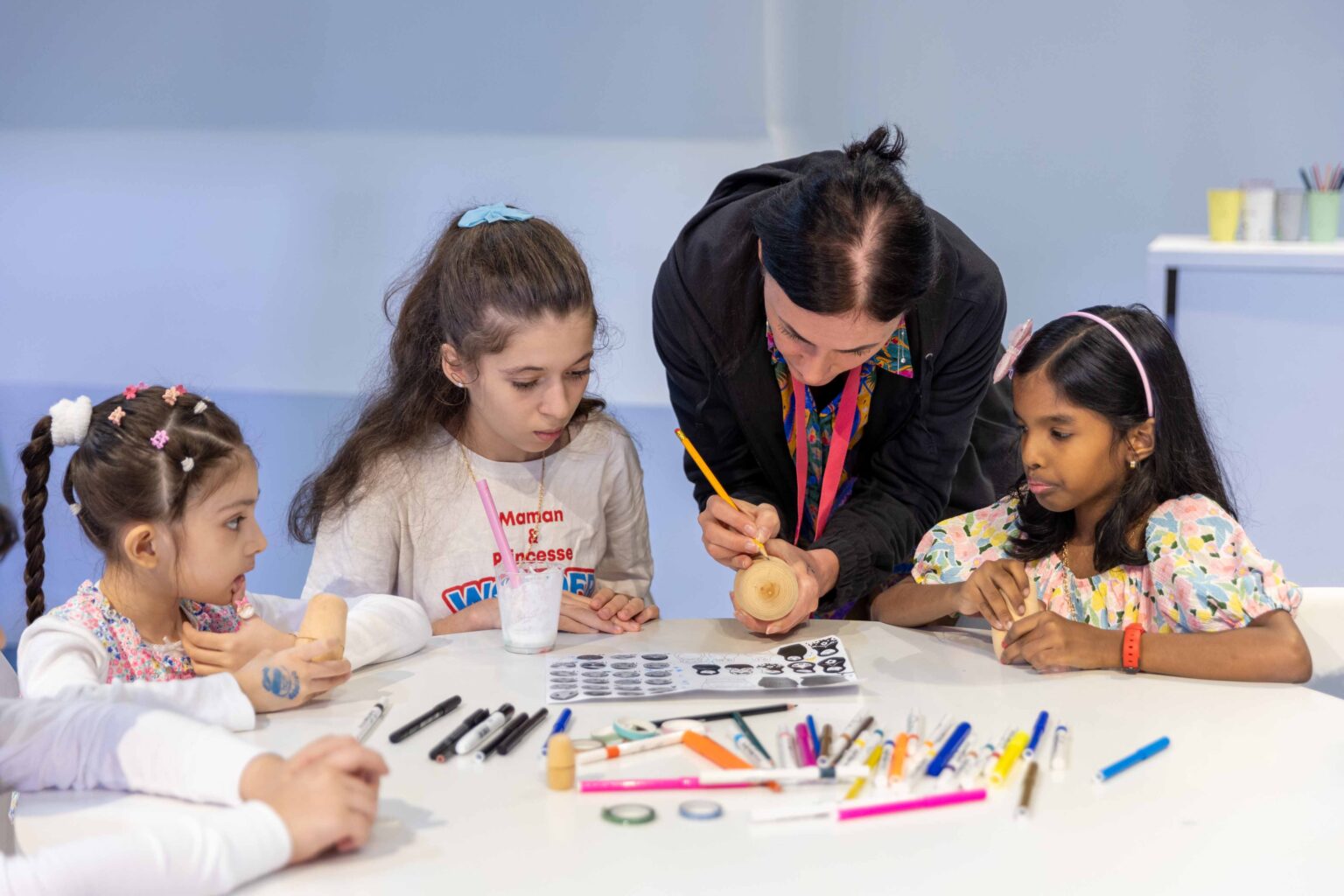Nesting dolls, a cherished set of colourful wooden figurines nested within one another in decreasing sizes, have long been synonymous with Russian craftsmanship. However, workshop instructor Lotorieva Svitlana Nikolaerna revealed to a group of young attendees of the Sharjah Children’s Reading Festival (SCRF 2024), that the origins of this beloved art form trace back to Japan.
“These are not Russian dolls, these are Fukuruma from Japan. Matryoshka, or Russian dolls, as you call them worldwide, were inspired from Japanese art in the 19th century,” she said, while preparing the tables for her workshop ‘Mini Doll Set’, placing wooden nesting dolls, colours and glittery tapes on four tables.
The children embarked on a transformative 30-minute journey, turning plain wooden pieces into exquisite works of art, each telling a unique story of their respective cultural background and creative flair.
Among the young artists was Giana, a 7-year-old from India, who adorned her doll with two braids and a dress with glitter tape and polka dots, infusing it with her unique charm. Next to her, Leya, a ten-year-old from France, gave her doll a touch of mystery, dressing it in a beautiful black abaya with delicate flower motifs and leaving its face featureless except for a subtle, enigmatic smile reminiscent of the Mona Lisa.
Even the boys enthusiastically joined in the creative process, with Hamdan crafting a handsome Arab lad, complete with a traditional red Gutra and a dashing Agal. The attention to detail, from the neatly trimmed beard to the captivating smile, showcased the diversity of artistic expression among the participants.
The journey of nesting dolls from Japan to Russia began in the late 19th century when Russian artists encountered Japanese dolls in a Moscow workshop named Children’s Upbringing. Inspired by the craftsmanship, Russian artists adapted the concept to create their own version of nesting dolls, known locally as Matryoshka dolls. Matryoshka means little matron in native language.
The international acclaim for Matryoshka dolls was solidified at the World Exhibition in Paris in 1900, where they were awarded the bronze medal, propelling them to become an iconic symbol of Russian culture.
Reflecting on the overwhelming popularity of the workshops, Lotorieva expressed gratitude for the enthusiastic participation of attendees. As the festival draws to a close, she looks forward to hosting two ‘Mini Doll Set’ workshops at the Creativity Forum on the last day, inviting visitors to delve deeper into the artistry behind nesting dolls.
For further details on the festival’s closing day events and workshops, interested individuals are encouraged to visit the official website at www.scrf.ae.

